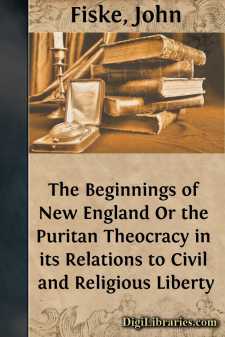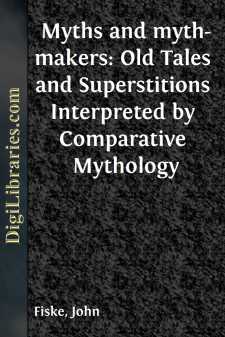Categories
- Antiques & Collectibles 13
- Architecture 36
- Art 48
- Bibles 22
- Biography & Autobiography 813
- Body, Mind & Spirit 141
- Business & Economics 28
- Children's Books 12
- Children's Fiction 9
- Computers 4
- Cooking 94
- Crafts & Hobbies 4
- Drama 346
- Education 46
- Family & Relationships 57
- Fiction 11826
- Games 19
- Gardening 17
- Health & Fitness 34
- History 1377
- House & Home 1
- Humor 147
- Juvenile Fiction 1873
- Juvenile Nonfiction 202
- Language Arts & Disciplines 88
- Law 16
- Literary Collections 686
- Literary Criticism 179
- Mathematics 13
- Medical 41
- Music 40
- Nature 179
- Non-Classifiable 1768
- Performing Arts 7
- Periodicals 1453
- Philosophy 64
- Photography 2
- Poetry 896
- Political Science 203
- Psychology 42
- Reference 154
- Religion 513
- Science 126
- Self-Help 83
- Social Science 81
- Sports & Recreation 34
- Study Aids 3
- Technology & Engineering 59
- Transportation 23
- Travel 463
- True Crime 29
The Beginnings of New England Or the Puritan Theocracy in its Relations to Civil and Religious Liberty
by: John Fiske
Description:
Excerpt
CHAPTER I.
THE ROMAN IDEA AND THE ENGLISH IDEA.
It used to be the fashion of historians, looking superficially at the facts presented in chronicles and tables of dates, without analyzing and comparing vast groups of facts distributed through centuries, or even suspecting the need for such analysis and comparison, to assign the date 476 A.D. as the moment at which the Roman Empire came to an end. It was in that year that the soldier of fortune, Odovakar, commander of the Herulian mercenaries in Italy, sent the handsome boy Romulus, son of Orestes, better known as "little Augustus," from his imperial throne to the splendid villa of Lucullus near Naples, and gave him a yearly pension of $35,000 [6,000 solidi] to console him for the loss of a world. As 324 years elapsed before another emperor was crowned at Rome, and as the political headship of Europe after that happy restoration remained upon the German soil to which the events of the eighth century had shifted it, nothing could seem more natural than the habit which historians once had, of saying that the mighty career of Rome had ended, as it had begun, with a Romulus. Sometimes the date 476 was even set up as a great landmark dividing modern from ancient history. For those, however, who took such a view, it was impossible to see the events of the Middle Ages in their true relations to what went before and what came after. It was impossible to understand what went on in Italy in the sixth century, or to explain the position of that great Roman power which had its centre on the Bosphorus, which in the code of Justinian left us our grandest monument of Roman law, and which for a thousand years was the staunch bulwark of Europe against the successive aggressions of Persian, Saracen, and Turk. It was equally impossible to understand the rise of the Papal power, the all-important politics of the great Saxon and Swabian emperors, the relations of mediaeval England to the Continental powers, or the marvellously interesting growth of the modern European system of nationalities. [Sidenote: When did the Roman Empire come to an end?]
Since the middle of the nineteenth century the study of history has undergone changes no less sweeping than those which have in the same time affected the study of the physical sciences. Vast groups of facts distributed through various ages and countries have been subjected to comparison and analysis, with the result that they have not only thrown fresh light upon one another, but have in many cases enabled us to recover historic points of view that had long been buried in oblivion. Such an instance was furnished about twenty-five years ago by Dr. Bryce's epoch-making work on the Holy Roman Empire. Since then historians still recognize the importance of the date 476 as that which left the Bishop of Rome the dominant personage in Italy, and marked the shifting of the political centre of gravity from the Palatine to the Lateran. This was one of those subtle changes which escape notice until after some of their effects have attracted attention....












